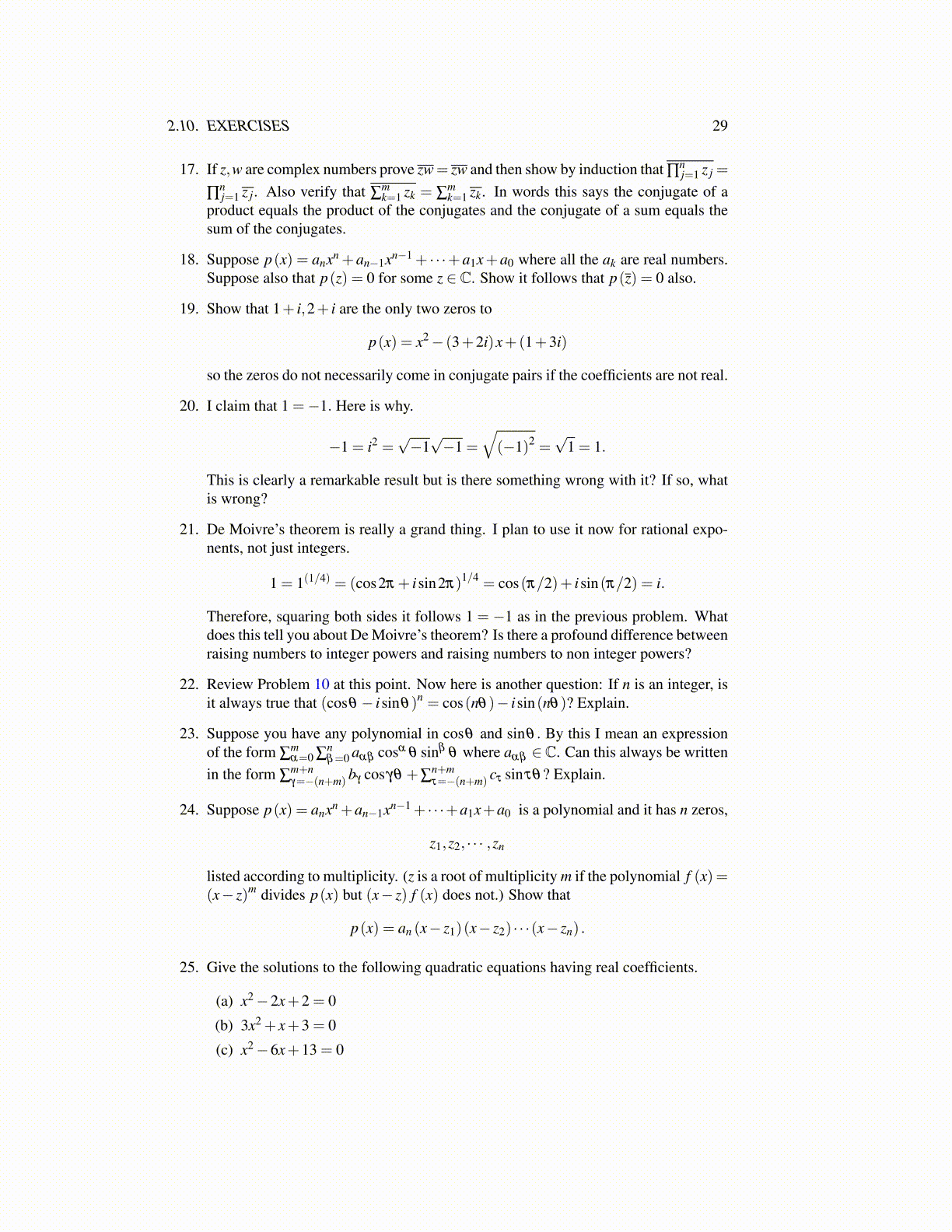
2.10. EXERCISES 29
17. If z,w are complex numbers prove zw= zw and then show by induction that ∏nj=1 z j =
∏nj=1 z j. Also verify that ∑
mk=1 zk = ∑
mk=1 zk. In words this says the conjugate of a
product equals the product of the conjugates and the conjugate of a sum equals thesum of the conjugates.
18. Suppose p(x) = anxn +an−1xn−1 + · · ·+a1x+a0 where all the ak are real numbers.Suppose also that p(z) = 0 for some z ∈ C. Show it follows that p(z) = 0 also.
19. Show that 1+ i,2+ i are the only two zeros to
p(x) = x2− (3+2i)x+(1+3i)
so the zeros do not necessarily come in conjugate pairs if the coefficients are not real.
20. I claim that 1 =−1. Here is why.
−1 = i2 =√−1√−1 =
√(−1)2 =
√1 = 1.
This is clearly a remarkable result but is there something wrong with it? If so, whatis wrong?
21. De Moivre’s theorem is really a grand thing. I plan to use it now for rational expo-nents, not just integers.
1 = 1(1/4) = (cos2π + isin2π)1/4 = cos(π/2)+ isin(π/2) = i.
Therefore, squaring both sides it follows 1 = −1 as in the previous problem. Whatdoes this tell you about De Moivre’s theorem? Is there a profound difference betweenraising numbers to integer powers and raising numbers to non integer powers?
22. Review Problem 10 at this point. Now here is another question: If n is an integer, isit always true that (cosθ − isinθ)n = cos(nθ)− isin(nθ)? Explain.
23. Suppose you have any polynomial in cosθ and sinθ . By this I mean an expressionof the form ∑
mα=0 ∑
nβ=0 aαβ cosα θ sinβ
θ where aαβ ∈C. Can this always be writtenin the form ∑
m+nγ=−(n+m)
bγ cosγθ +∑n+mτ=−(n+m)
cτ sinτθ? Explain.
24. Suppose p(x) = anxn +an−1xn−1 + · · ·+a1x+a0 is a polynomial and it has n zeros,
z1,z2, · · · ,zn
listed according to multiplicity. (z is a root of multiplicity m if the polynomial f (x) =(x− z)m divides p(x) but (x− z) f (x) does not.) Show that
p(x) = an (x− z1)(x− z2) · · ·(x− zn) .
25. Give the solutions to the following quadratic equations having real coefficients.
(a) x2−2x+2 = 0
(b) 3x2 + x+3 = 0
(c) x2−6x+13 = 0